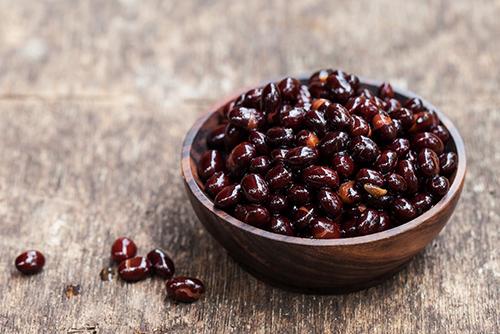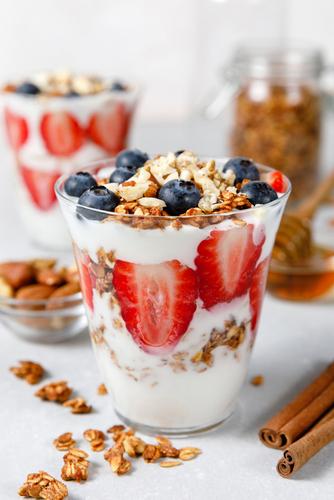 Calcium is the mineral that is most critical for bone health, no matter an athlete’s age. But is your athlete getting enough calcium in their daily diet? It can be tricky to make sure that they are eating enough to hit the 1,300-milligram per day recommendation, but it’s absolutely possible.
Calcium is the mineral that is most critical for bone health, no matter an athlete’s age. But is your athlete getting enough calcium in their daily diet? It can be tricky to make sure that they are eating enough to hit the 1,300-milligram per day recommendation, but it’s absolutely possible.
Here, TrueSport Expert Kristen Ziesmer, a registered dietitian and board-certified specialist in sports dietetics, is sharing everything you need to know about calcium and how to make it a part of your athlete’s everyday meal plan.
How much calcium does a young athlete need?
For athletes 9 to 18 years old, the recommended daily intake of calcium is 1,300 milligrams, which is achievable with a food-first approach. Ideally, an athlete is eating calcium-rich foods at every meal and spreading out their intake of calcium throughout the day to improve absorption.
What types of foods contain calcium?
Generally, dairy is the simplest way to increase your athlete’s calcium intake, says Ziesmer. Most yogurts, milk, and cheese will contain between 200 and 400 milligrams of calcium per serving.
A few examples include:
 1 cup of 1% milk – 310 milligrams of calcium
1 cup of 1% milk – 310 milligrams of calcium- 1 cup of non-fat Greek yogurt – 260 milligrams of calcium
- 1/2 cup Ricotta cheese – 290 milligrams of calcium
- 1 ounce cheddar cheese – 200 milligrams of calcium
However, even an athlete who’s happy to eat a lot of dairy products may struggle to eat between three and six servings of it in a day. Additionally, athletes who are plant-based or are from cultures where dairy isn’t found in many meals may also struggle to meet their daily calcium requirements.
Fortunately, there are plenty of other foods that are rich in calcium. There are also many food products that are fortified with calcium as well as with vitamin D, which increases the body’s ability to absorb the calcium. Look for calcium-fortified orange juice or almond, rice, or soy milk (if your athlete is lactose-intolerant or doesn’t like regular milk). These typically contain 300 to 400 milligrams of calcium. Many breakfast cereals will also contain calcium, so be sure to check the label on any granola or other cereals as well.
Many vegetables contain smaller amounts of calcium. Examples include:
- 1 cup cooked spinach – 245 milligrams of calcium
- 1 cup cooked kale – 177 milligrams of calcium
- 1 cup cooked broccoli – 62 milligrams of calcium
There are also great plant-based protein options that are naturally rich in calcium or have calcium-fortified options available. These include:
 1/2 cup tofu – 430 milligrams of calcium
1/2 cup tofu – 430 milligrams of calcium- 1 cup black beans – 240 milligrams of calcium
- 1 cup of lentils – 198 milligrams of calcium
- 1 ounce of tahini (made from sesame seeds) – 120 milligrams of calcium
For those who do eat animal protein, sardines (with the bones) are a great calcium source. A 3-ounce serving provides 180 milligrams of calcium.
What could a daily meal plan look like to achieve the daily recommended intake of calcium?
To consume 1,300 milligrams of calcium, an athlete could eat the following:
- Breakfast: Cereal with milk (300 milligrams)
- Lunch: Greek yogurt with berries and granola (260 milligrams)
- Dinner: Rice bowl with 1/4 cup tofu, cooked spinach, 1/2 cup black beans, avocado, salsa and 1 ounce shredded cheddar cheese (785 milligrams)

-or-
- Breakfast: Greek yogurt with berries and granola (260 milligrams)
- Lunch: Rice bowl with 1/2 cup tofu, 1/2 cup cooked kale, soy sauce, sliced pickled ginger, sliced avocado, black sesame seeds (680 milligrams)
- Dinner: Burrito with 1/2 cup black beans, avocado, salsa and 1 ounce shredded cheddar cheese (455 milligrams)
Finally, it’s important to remember that calcium does require vitamins to help the body absorb it, says Ziesmer. These include vitamin D and vitamin K. In addition to being the ‘sunshine vitamin,’ where sun exposure actually gives you a healthy dose of vitamin D, vitamin D is also often found in foods that are fortified with calcium, and vitamin K can be found in dark leafy greens.
________________________
Takeaway:
While you should be paying attention to how much calcium your athlete is getting in their diet, it’s easy to hit the required 1,300 milligrams of calcium through a food-first approach. Dairy is one of the simplest sources of calcium, but there are many plant-based options as well.



